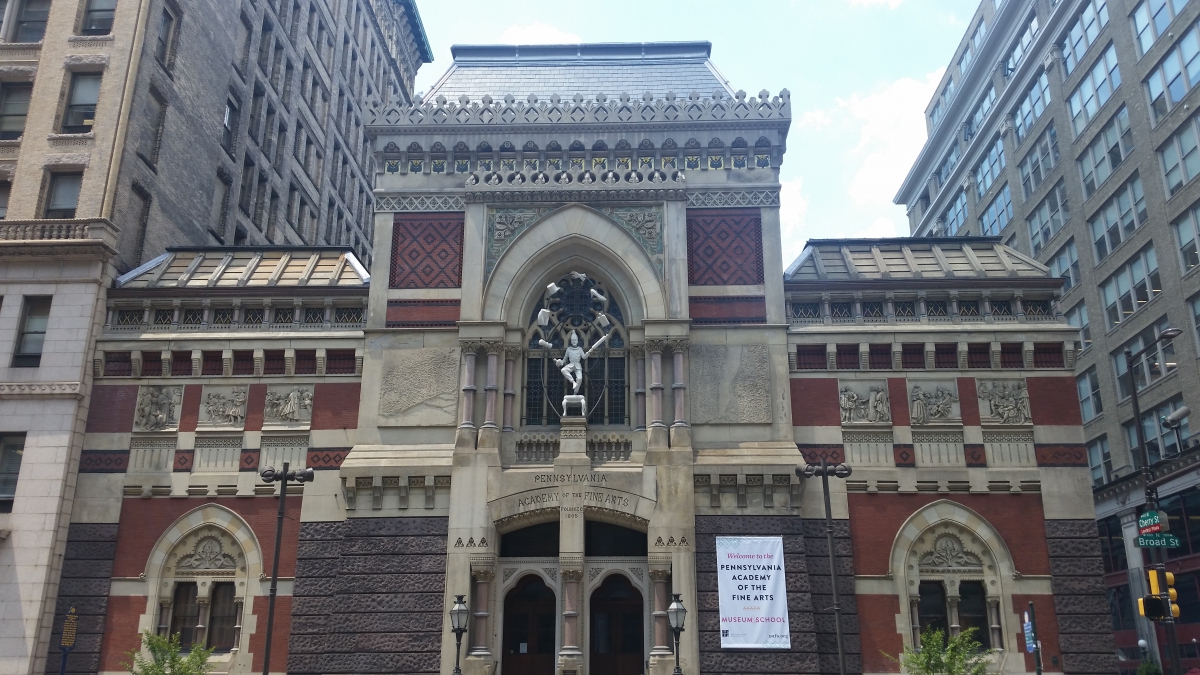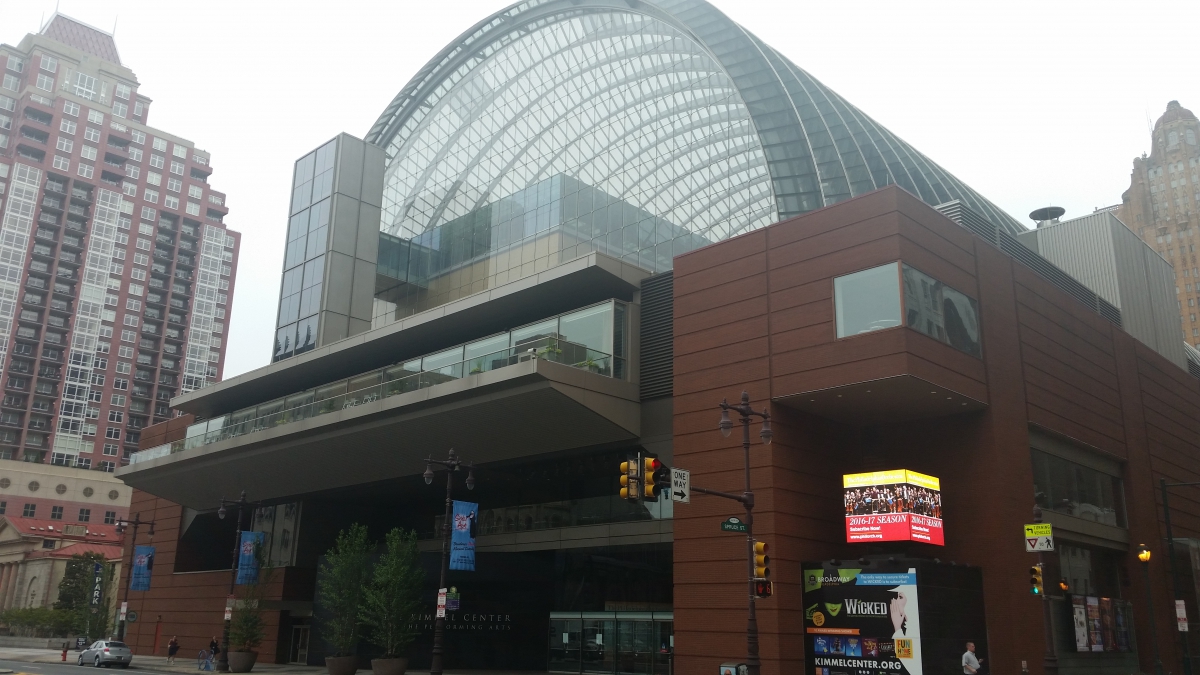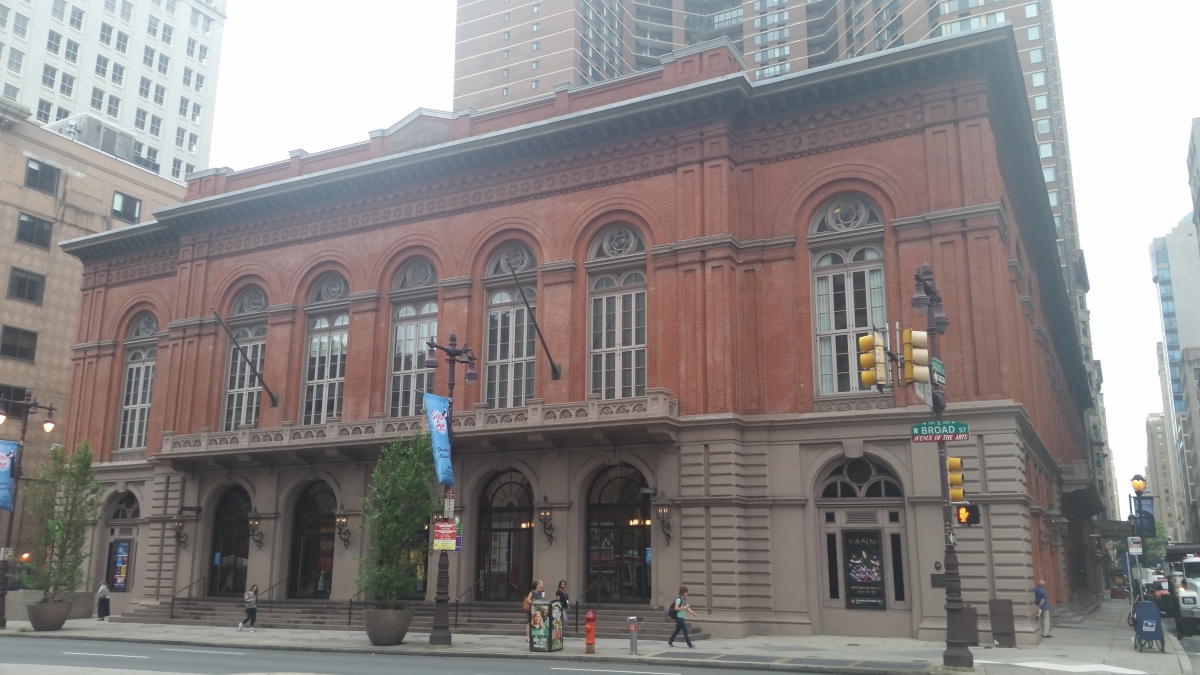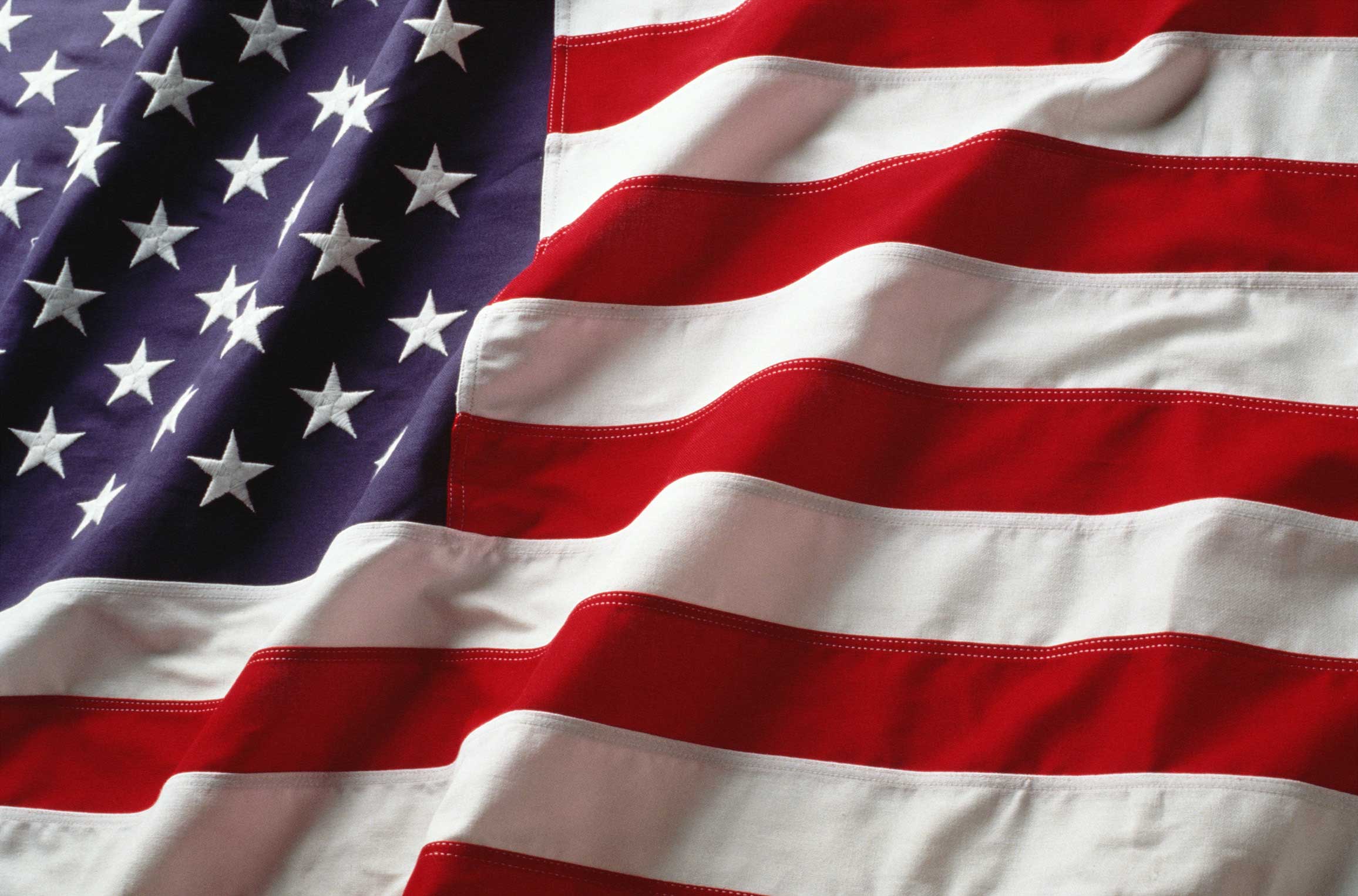Avenue of the Arts
Posted on Friday, October 21, 2016
Related Posts
- Buy Tickets for The Constitutional Walking Tour of Philadelphia – See 20+ Sites on a Primary Overview of Independence Park, including the Liberty Bell and Independence Hall
- Philadelphia Music Alliance’s Walk of Fame
- Walnut Street Theatre
The epicenter of Philly's live performing arts scene
The History
Broad Street (today also known as Avenue of the Arts) was always designed to be one of the most important streets in Philadelphia. Philadelphia founder William Penn designed it to be the main North-South thoroughfare through town. Though Penn called for a city centered upon a central square, uncooperative early Philadelphians preferred living by the banks of the Delaware River, leaving the area around Broad Street mostly unpopulated and rural. As colonists gathered in Philadelphia to declare their independence and create this nation, the area around Broad Street still supported more livestock than people.
Finally nearly two centuries into Philadelphia’s history, that began to change and Penn’s plan began to come to fruition. By the end of the 19th century, Broad Street was among the busiest streets in Philadelphia. The street was home to countless cultural institutions, ornate office buildings, Philadelphia’s new City Hall, and some of the most impressive mansions in the city. Not long afterwards however, as automobiles became more and more commonplace, they had an enormous effect on Broad Street. The extra wide Broad Street, capable of supporting six lanes of traffic, suddenly became a major automobile thoroughfare through Center City Philadelphia and many stretches of the street were redesigned with an auto centric focus. Gas Stations replaced theaters, parking lots replaced bank headquarters. What had once been a busy bustling street, became so auto focused that in the 1990s former Mayor Ed Rendell remarked that he could walk a mile down Broad Street and not see even 100 people. Ed Rendell was determined to restore Broad Street to its former glory and that began with recognizing what Broad Street had long been, an Avenue of the Arts.

The Avenue of the Arts revitalization projected was officially started in 1993. Initially the project focused on the stretch of Broad Street that ran south of Philadelphia’s City Hall from Market St to Washington Avenue. By 1995 however, the Avenue of the Arts was expanded to also run north of City Hall, all the way to Gleenwood Avenue. Despite the tough times that Broad Street had been through, many historic and cultural destinations still lined the street. The University of the Arts is one of oldest art schools in the United States and it has had a presence on Broad Street for over a century. On the northern side of Broad Street, the Pennsylvania Academy of the Fine Arts is the oldest art museum and art school in the United States, dating all the way back to 1805. Further north on Broad Street, the Uptown and Freedom Theaters were historic African American institutions. While these important buildings remained, they were unconnected and underutilized. The creation of the Avenue of the Arts was designed to bring cohesion to Broad St and to encourage the growth of the artistic community that had thrived there for generations.
What to See
Of the new additions to the Avenue of the Arts since its inception, arguably the biggest and most important was the Kimmel Center for the Performing Arts. Renowned Uruguayan architect Rafael Vinoly designed the concert hall which opened in 2001 after decades of planning. The large glass domed structure contains two theaters and is the official home of the Philly Pops, Opera Philadelphia and the renowned Philadelphia Orchestra. The Philadelphia Orchestra is widely acclaimed and considered one of the “Big Five” of American Orchestras and is currently under the direction of the music director Yannick Nezet-Seguin. The Kimmel Center is also home to the Hamilton Garden, a beautiful garden space located beneath the glass dome at the top of the Kimmel Center. The garden provides breathtaking views and is frequently the home for private events such as weddings.

Not far from the Kimmel Center sits two theaters that opened on Broad Street following the creation of the Avenue of the Arts, The Wilma Theater and the Suzanne Roberts Theater. The Wilma, a Philadelphia theater project dating back to the 1970s, opened their current theater on the Avenue of the Arts in 1996, making it one of the first art institutions to move to Broad Street after the creation of the Avenue of the Arts. The Suzanne Roberts Theater was built as part of the Symphony House Condominium Building and occupies the first floor of the building. Opening in 2007, the Suzanne Roberts Theater is currently one of the newest theaters on the Avenue of the Arts and is operated by the Philadelphia Theater Company. These new theaters joined historic theaters like the Academy of Music (built in 1855) and Merriam Theater (built in 1918) among others to create one of the most bustling strips of live performance spaces in the country.
Perhaps even more exciting than the creation of new institutions on the Avenue of the Arts has been the revitalization of formerly grand historic buildings. On North Broad Street the Packard Building was once a grand showroom and factory for Packard Automobiles, today the historic building (built in 1910) is being converted into the new home of the Pennsylvania Ballet. Further north on the Avenue of the Arts, the historic Uptown Theater (built in 1929) is not only a fabulous example of Art Deco architecture but also one of the most important African American theaters in Philadelphia. A center of the 20th Century African American community in Philadelphia, the theater played host to some of the biggest musicians of the 50s and 60s and 70s such as Aretha Franklin, Ray Charles, Sammy Davis Jr, The Temptations, Jimi Hendrix, the Jackson Five and many more. In its heyday the Uptown Theater rivaled the Apollo Theater in Harlem as one of the best places in America to hear Soul and R&B, while also becoming a center for civil rights activism in Philadelphia. While the Uptown Theater has not hosted a show in nearly 40 years, work has now begun on restoring this historic theater to its former glory.

Insider Info
While not generally associated with the Avenue of the Arts, much further up North Broad Street the campus of Temple University is indeed located directly on the Avenue Arts; appropriate considering the school is one of the biggest artistic hubs in Philadelphia. Between the Tyler School of Art and the School of Theater, Film and Media Arts, there are thousands of artists on Temple’s campus, more than there are in some of the Philadelphia colleges that focus on the arts specifically. Tomlinson and Randall Theaters on Temple’s Campus are the frequent home of Temple Theater productions. Student productions include classic Shakespearian plays, entirely original student productions and everything in between.
The Temple Performing Arts Center is another venue on Temple’s campus that is filled with history and great place enjoy the arts. The performing arts center was originally Grace Baptist Church and a former pastor of the Church began teaching classes there in the 1880s that would eventually lead to the creation of Temple University. Even though the university grew out of the Baptist Church, the actual university had been separate and officially unaffiliated with the Baptist Church since becoming a chartered University in 1888. It wasn’t until 1974 that Temple University purchased the former Baptist Church in which the University was founded and transformed it into the Performing Arts Center that it is today. Throughout the years the building has hosted important political figures such as Martin Luther King Jr. and President Franklin D. Roosevelt. Today the center hosts a diverse array of acts that includes campus acts such as the Temple University Symphony Orchestra and Choirs as well as local musicians, stand ups, and more.
In addition to all of this, Temple’s Campus is actually home to the largest performing arts venue on the Avenue of the Arts, the Liacouras Center. While built for Temple’s Men’s and Women’s Basketball teams, the over 10,000 seat arena is also home to many artistic performances. Popular music acts such Bob Dylan, R.E.M. and Kanye West have all performed at the Liacouras Center, and even President Barrack Obama has spoken at Temple’s large arena.
How to Get There
For guests of The Constitutional Walking Tour, it is very easy to get to the Avenue of the Arts. The National Constitution Center where all of our tours begin and end is just blocks away from the Avenue of the Arts and an easy walk. From the National Constitution Center you should head west on Arch St and after a roughly 15 minute walk you’ll reach Broad Street. The Avenue of the arts spreads in both directions on Broad Street for many blocks from this point.
Broad Street is also very easy to reach through public transit as the Broad Street Line runs directly beneath the Avenue of the Arts. No fewer than 8 subway stops on the Broad Street line are on the Avenue of Arts, allowing easy travel no matter what attraction on the Avenue of the Arts you wish to travel to. The Market Frankford Line and the underground Trolley lines also stop on the Avenue of the Arts at 15th Street Station. Nearby by Suburban Station also makes regional rail an easy option and there are also numerous parking garages on Broad Street to accommodate those who wish to drive.
Additional Information
1500 Walnut Street, Floor 17
Philadelphia, PA 19102
215.893.1999
Broad and Locust Streets
Philadelphia, PA 19102
215.893.1999
118-128 North Broad Street
Philadelphia, PA 19102
215.972.7600
265 S Broad St
Philadelphia, Pa 19107
215.893.0895
At the Suzanne Roberts Theater
480 S Broad St
Philadelphia, Pa 19146
215.985.0420
1301 W. Norris St.
Philadelphia, Pa 19122
Upcoming Productions: http://tfma.temple.edu/theater/productions/upcoming
Blog tags:



